Today, when the whole fashion industry is working on the creation of a variety of models of clothing and hats, interest in needlework continues unabated. After all, wearing a hat, knitted on the needles with their own hands is much nicer, in addition, this thing will be really exclusive. It remains only to determine the pattern, more comfortable to get settled in a chair and get to work.
Types of patterns
There are many different patterns that are suitable for knitting hats. Each of them has its advantages and is interesting in its own way. The choice of the pattern also depends on the skill level of the needlewoman: for beginners, it is better to choose a simpler option, experienced knitters can do any, even the most complex and intricate patterns.
A novice needlewoman to create a headdress should choose the most simple pattern. This is a stocking knit, in which in the odd rows all the loops are knitted facial, and in even-numbered ones. If you knit tightly, the result will be a smooth, smooth canvas, to which you can later sew some decorative element.
Alternatively, the cap can be made more dense garter stitchwhich looks the same on both sides. In this case, all the loops, regardless of the series, you need to knit facial. It should be remembered that this pattern stretches very well, which must be taken into account when calculating loops. This picture looks better from thick yarn.
Beginners will easily master the simple “putanka” pattern. (it is also called “rice” or “pearl”). Externally, the picture resembles a scattering of small pebbles or cereals (hence the variants of the names). In the process of work, you just need to alternate the front and back loops, knitting them in each new row not according to the pattern, but changing (to replace the face loop in the back loop, and vice versa). Note that the “putanka”, as well as the garter stitch, has a two-sided pattern.
A popular and simple headwear pattern is a rubber band. It can be made all the product, or only its edge (it will become denser, will not be wrapped). An elastic band is alternating facial and purl loops (there may be a different number of them), as a result of which vertical stripes are obtained: convex - from facial loops, concave - from purl.
A distinctive feature of this pattern is its elasticity, which is undoubtedly an advantage for the cap. If you use smaller needles for work, you will get a more contrasting canvas.
The most versatile types of gum are 1x1 and 2x2. In even rows such patterns are knitted according to the pattern. It is worth noting that the 2x2 version looks better on voluminous headdresses (for example, knitted LIC, especially if you make it seamless).
You can experiment using 3x2, 4x5, etc. for knitting. at your request. The main thing - to suit you the final result.
If you want to make a warmer thing, use a double elastic band. Keep in mind that in this case you will need twice the amount of yarn, since the cap will turn out to be double-layered. The first row of such a pattern fits easily: one loop is facial, the other is purl. The main pattern starts from the second row: one loop is made front, and the next one is removed, and the thread must pass in front of the canvas. All subsequent rows are tied to the very end in a similar way.
English gum is already more complex - it refers to patent drawings. This is a group of patterns that use double crochets.In the English gum, the initial row is knitted in the 1x1 way, in all the other rows there are purl loops, you fold, not knitting, with a knit on the knitting needle, and the facial loops knit as usual.
In a similar way, other patent drawings are knitted, we will give examples such as pearl gum and “honeycombs” (in large and small versions).
It is easy for a novice needlewoman to make various geometric patterns based on a specific arrangement of face and back loops. This drawing is "chess"representing alternating squares that can be of different sizes: 2x2, 3x3, 4x4, etc. (but do not need to make them too large). So, in order to tie a 4x4 “chessboard”, in the first row you knit 4 front and 4 back loops in turn, three subsequent rows are knitted according to a pattern. In the fifth row, in place of the facial loops, purlas are knitted and vice versa. The cap with this pattern will turn out to be rather dense, it will not be wrapped even without an elastic around the edge.
Another example of a geometric pattern is diamonds, which are performed according to a specific scheme.
Caps connected by transverse or diagonal stripes look interesting, especially it concerns volumetric models - cap-yoke, or snud. In the first case, several rows are knitted with a stocking, and then on the place of the facial loops, purses are made and the next several rows are knitted according to the pattern - this is how the required number of bands, which can be of different thickness, is obtained. The diagonal stripes are slightly more difficult to knit, the basis of the pattern is the alternation of the front and back loops, which are gradually shifted with each subsequent row.
Relief patterns always look spectacular. These hats look more voluminous and attract attention. These are all beloved braids (or Aran patterns), which are obtained as a result of interlacing facial strips consisting of different numbers of loops, with a certain interval. If the two braids are placed side by side and cross them in opposite directions, you get another picture - a complex braid. These patterns significantly thicken the canvas, so it is ideal for warm winter hats.
Simulates braid fashionable recently, the pattern "spike". Initially, the transverse band with a large oblique knit in the center knits, and after it the cap liner is tied.
Other options for convex embossed patterns - This is a variety of plaits, rhombuses, bumps, raspberries, butterflies, leaves, as well as knitting with cloquet effect (in which the face fabric is gathered into a fold with the help of auxiliary knitting needles) as if covered with large bubbles.
Many craftswomen are very fond of openwork patterns. These are various waves, snakes, nets, “peacock tail”, delicate leaves, diamonds, Christmas trees, etc. The basis of these drawings is the use of naquids. These patterns are executed according to simple patterns. As a rule, they are used to create light summer hats. A lot of small holes provide good ventilation of caps and panama hats.
If you want to make a similar product for the off-season, take care of an extra layer - a kind of lining.
Beautiful and original hats with jacquard patterns that involve the use of multi-colored threads (two or more). Due to this, the products are warm and not blown. This way you can get a variety of images: abstract ornaments, animals, plants, cartoon characters and much more.
For work, threads of the same quality and thickness are needed that do not shed after washing (otherwise the entire pattern will deteriorate). The spokes should not be too thick, otherwise the fabric will turn out to be friable and the broaches will appear through the inside out rows.
Today once popular Norwegian and Scandinavian patterns have returned to fashion., depicting frozen in reindeer, unpretentious stars, schematic snowflakes, Christmas trees and ordinary diamonds.Men's hats are knitted, as a rule, with geometric jacquard, while women's hats are knitted with floral. Beginning needlewomen can knit a so-called lazy pattern when the simplest ornament is performed "by eye".
Professional knitters can show imagination and come up with their own pattern, thereby creating a unique thing.
Many have heard about patchwork - patchwork, but not everyone knows that there is his knitted analogue. This technique is called enterlak. Connected patches, connecting with each other, form a beautiful colored canvas. The main task here is knitting without tearing the thread.
Scheme
Let us consider in more detail the knitting technique of some patterns.
"Small honeycombs"
In the first row all the loops are knitted facial. In the second - facial alternate with nkida, a number should be completed just removed loop. In the third row, the front and removed un-tied nakida are alternately tied, you need to finish the series with a face loop. The fourth row begins with a nakid, the next loop is removed, without knitting, we knit a nakida loop with the front one. In the fifth, we alternate two faces with the back cover removed. In the sixth - loop together with the crochet we knit the face, then one nakid, one loop, without knitting, remove. The seventh row is performed as the third. Next is the repetition of 3-6 rows.
"Network"
The popular “pletenka” pattern is somewhat similar to braids, but has a different order of intersection. In this example, the total number of loops is a multiple of six, excluding edge loops. The initial two rows are made by stocking. In the third row after the edge every 6 loops we cross each other (3x3) so as to form a tilt to the left. 4-6 rows knit by pattern. In the seventh row, we knit three front loops, and then again, as in the third row, we cross each 6 loops, but now we form a slope to the right side. We knit the eighth row according to the pattern, and since the ninth row the pattern repeats.
"Butterfly"
This beautiful relief pattern is made of thick, but light yarn. The pattern is formed from broaches, which stretch the canvas, creating a relief resembling the silhouette of a butterfly.
The number of loops is a multiple of ten plus four.
In the first row, knit two loops with facial loops; you can take five loops off without knitting; again, five ordinary facial loops. Two facial loops complete the row. The second row is performed according to the picture. 3-9 rows are performed similarly to the first and second. In the tenth row, every five broaches should be collected from the front side (purl loop), transferred to the left needle, and then knit the entire group together with the appeared purl loop.
How to choose a yarn?
If you decide to knit yourself a beautiful hat, then the right yarn is half the success.
Buying thread, carefully read the label. It usually indicates the density of knitting (how many loops and rows are needed for a square canvas of 10x10 cm) and what size of knitting needles to use when working. To make a jacquard pattern, it is important to know if the yarn is shedding. Analyze the consumption of threads: the thinner they are, the less yarn will be spent on the cap.
Before starting work, knit a small piece and finally determine the density of knitting and the consumption of yarn.
Each particular pattern is designed for a specific yarn. For example, thin cotton hats are knitted from thin cotton threads (“iris”, “lily”, “violet”). Smooth yarn on wool basis is suitable for voluminous braids, and fluffy mohair and angora do not need fancy patterns - they look great, connected with a simple stocking stitch. The required thickness of the needles also depends on the texture of the yarn.
The color of the yarn also has implications for the choice of pattern caps. So, the Aran patterns (intricate weaves of braids, plaits, braids) look more advantageous on a light canvas. But from the melange threads it is better to make a hat with an ordinary elastic band, stocking or garter stitch.
Beautiful images
-
Fitted head cap is a combination of two types of rubber bands. The wide bar is made with a simple elastic band - in the form of alternating facial and purl loops (1x1). The main part of the product is connected by wide stripes. Concave strips of purl loops gradually disappear, approaching the top of the cap, which is decorated with black fluffy pom-pom from natural fur. Knit headdress echoes the texture of the collar of a jacket, and dark gray color is combined with the color of the eyes of the girl. The pompon is made in the same color as the sweater. All this as a whole creates a harmonious youth image.
-
The charming set of a fitting hat and a massive scarf-collar is made of thick yarn. The headpiece is connected with a trendy “braid” pattern, which looks particularly advantageous in a light purple color. This drawing makes the cap larger, which is in harmony with the large features of the girl’s face. Chic fur collar outerwear adds chic to the whole ensemble.
-
Elegant lightweight beret is suitable for warm spring and early autumn. The pleasant shade of pink is combined with the hair of the girl and refreshes her complexion. The headdress is made of an airy openwork mesh, and its edge is processed with an elastic band, which is a sequential alternation of two front and three back loops, which it takes. Carelessly tilted to one side, the girl’s clothes, made of yarn of the same texture and color, her loose hair and mysterious smile create a tender, romantic image.

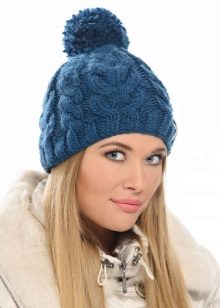
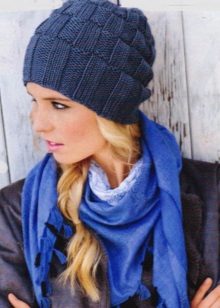
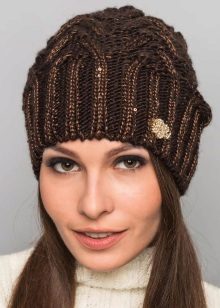
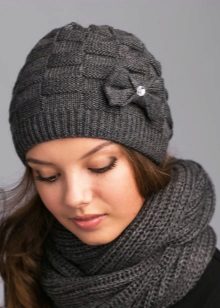
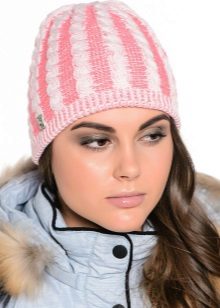
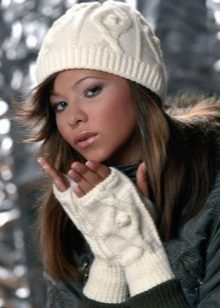
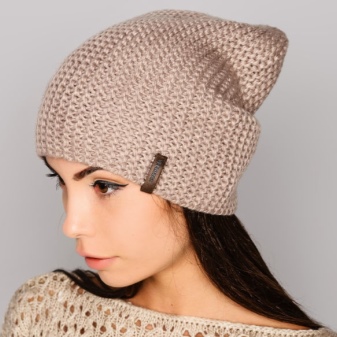
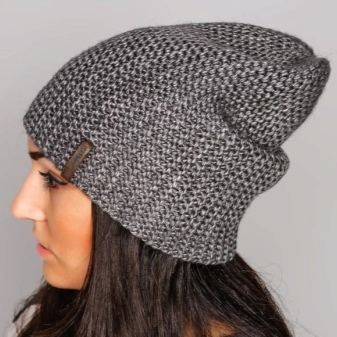

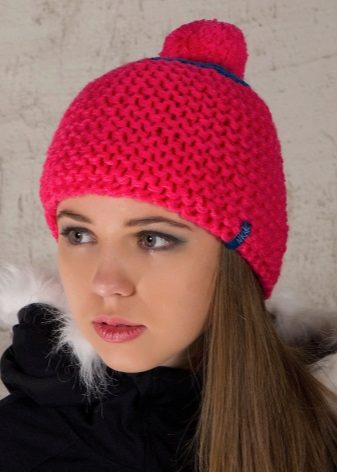
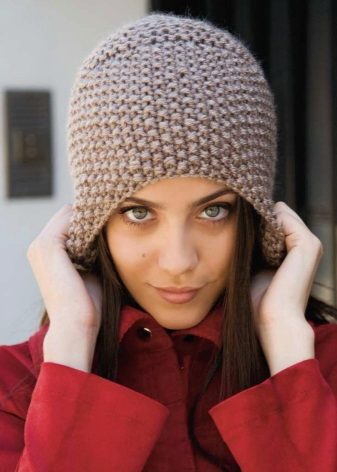

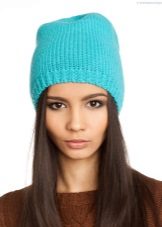
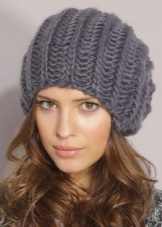
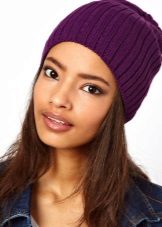
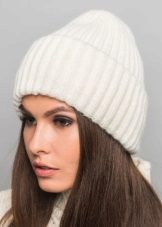
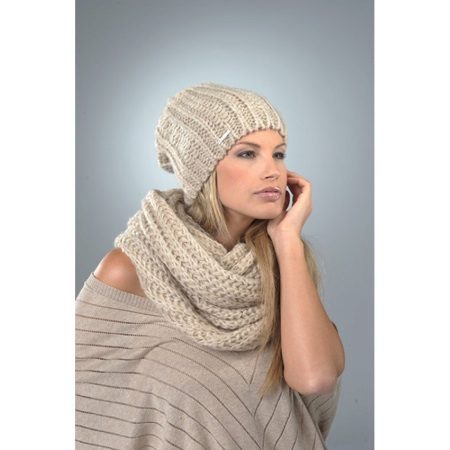
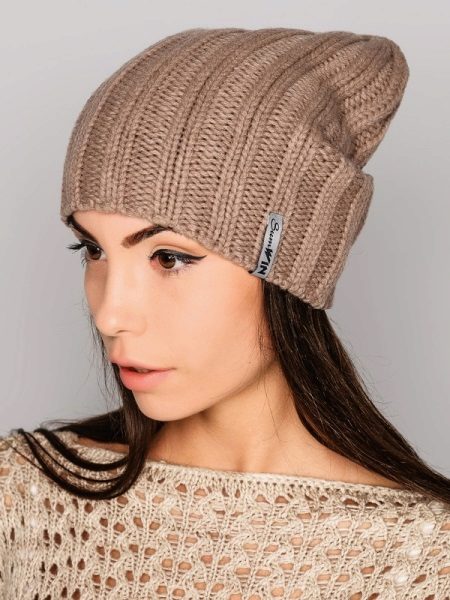
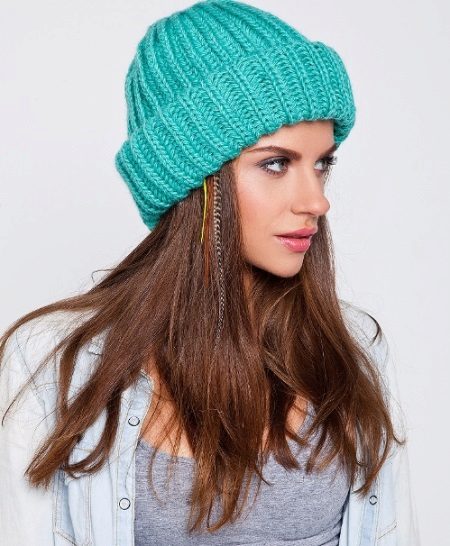
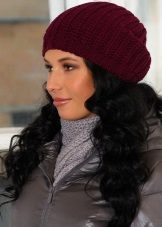
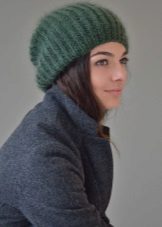

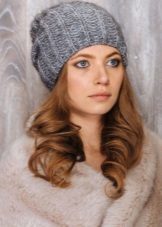
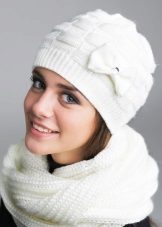
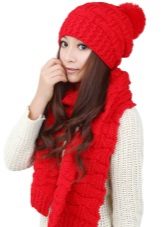
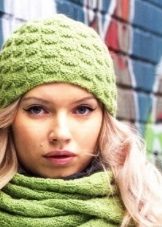
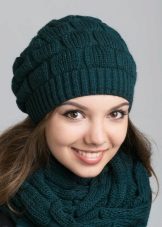
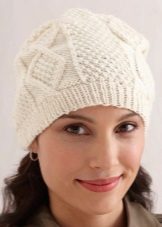
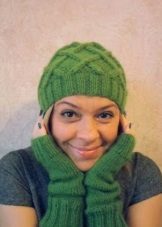
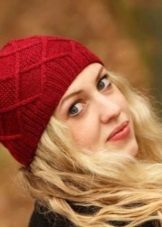
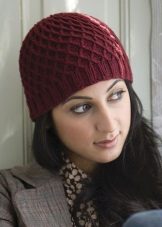
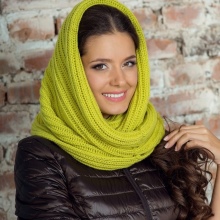
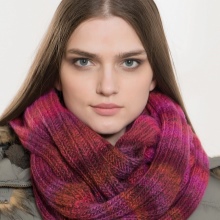
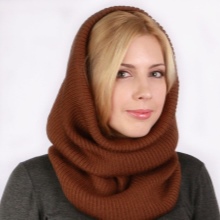
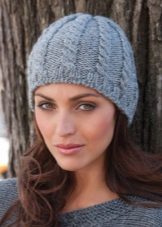

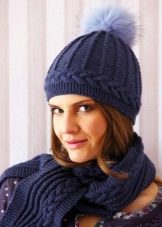
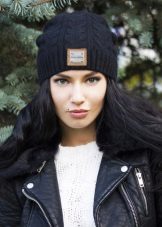
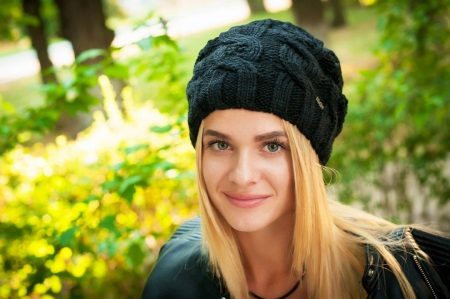


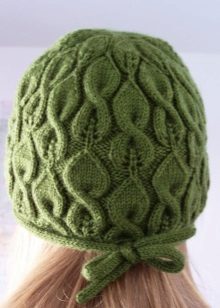
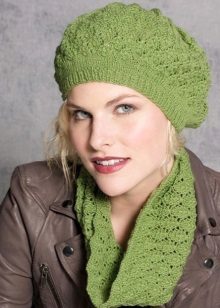
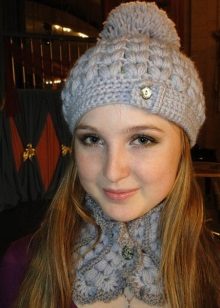

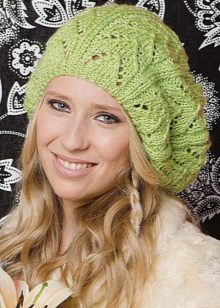
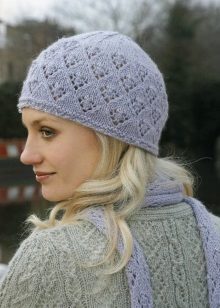
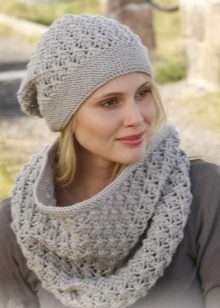
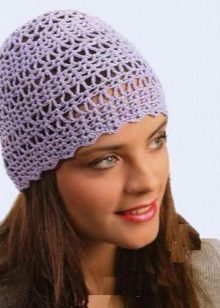
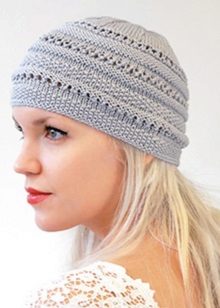
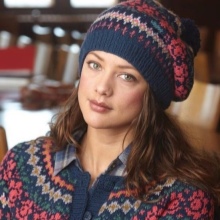
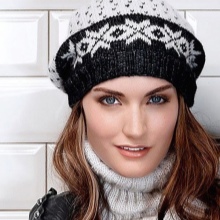
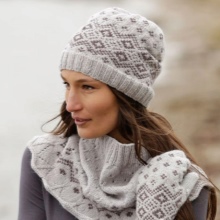
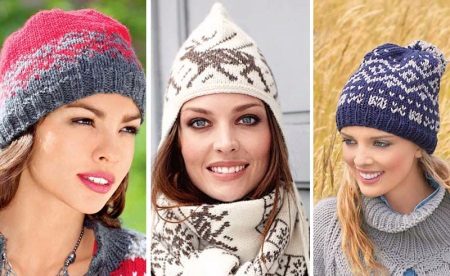
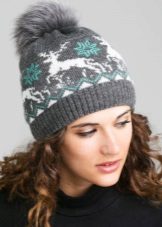

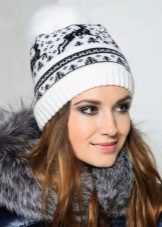
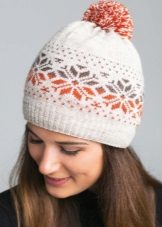
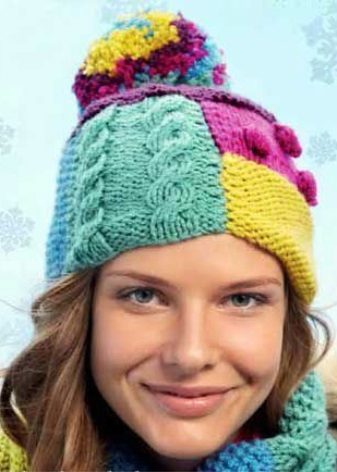
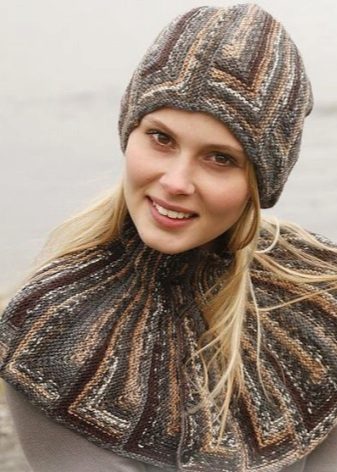
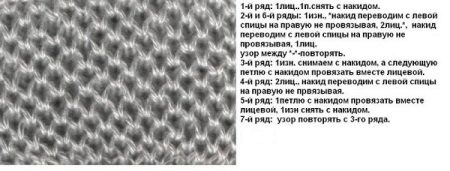

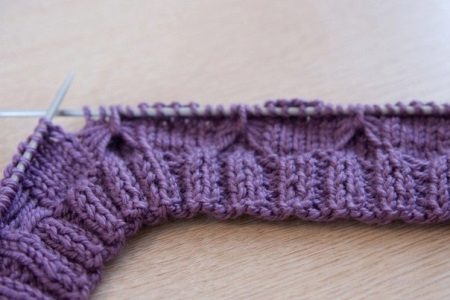
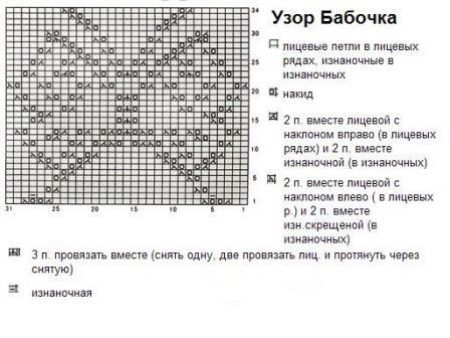
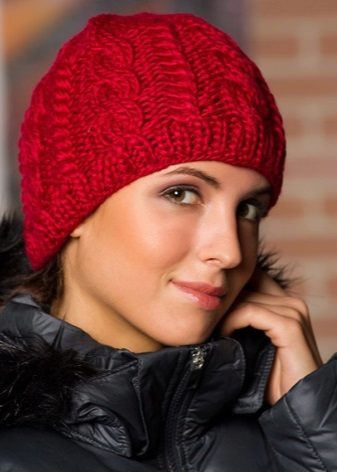
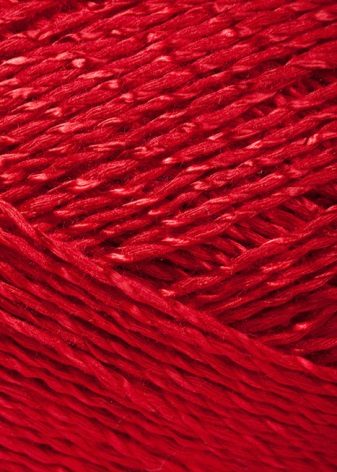
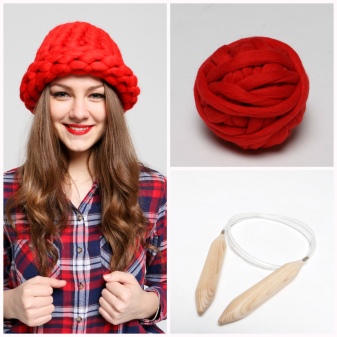
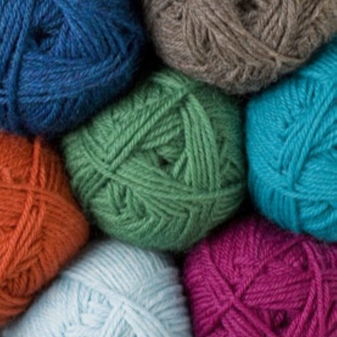
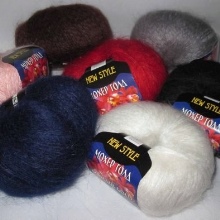
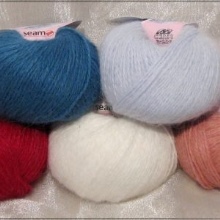
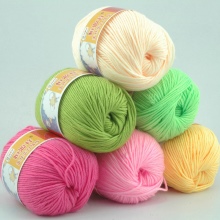
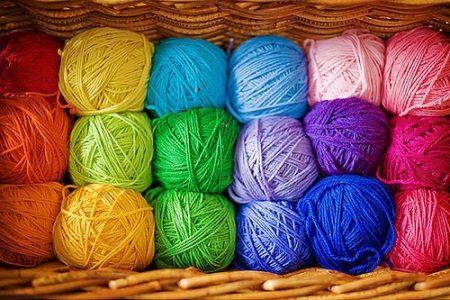
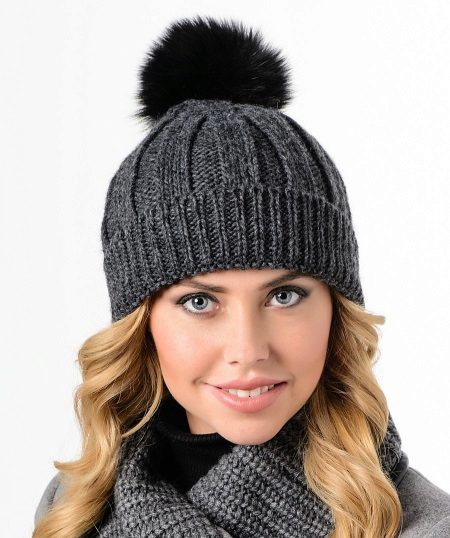
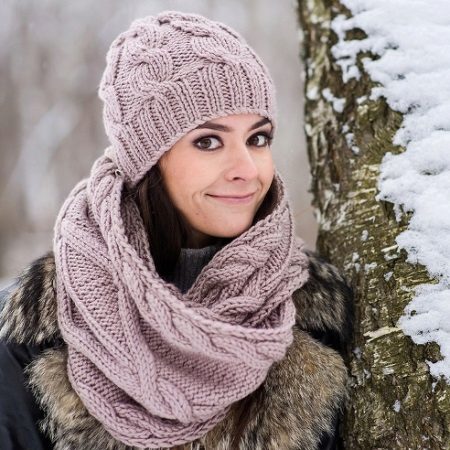











I liked everything